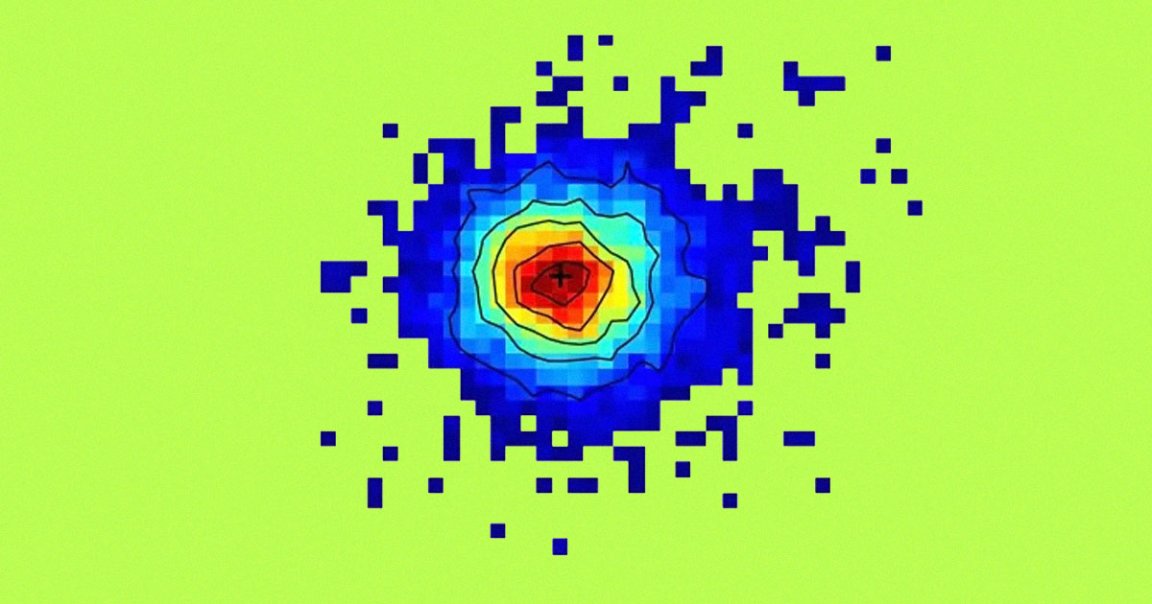
As evidence continues to mount that the mysterious object with interstellar origins currently speeding toward the inner solar system at a breakneck speed is a comet, not everybody’s convinced quite yet.
Harvard astronomer and alien hunter Avi Loeb raised the far-fetched, yet tantalizing possibility that the object, which was first spotted by astronomers earlier this year, could have been sent by an extraterrestrial civilization.
While he admitted in a blog post last month that it’s most likely that “3I/ATLAS is a completely natural interstellar object, probably a comet,” a letter to the editors of the journal Astronomy & Astrophysics has Loeb questioning that conclusion once more.
At the heart of the conundrum is the purported comet’s tail. The glowing globs of icy particulates conventionally leave a trail of gas and dust in a comet’s wake, resulting in their distinctive shape.
However, there’s a slim chance that 3I/ATLAS may be an outlier. According to the paper, which was authored by an international team of astronomers, 3I/ATLAS “exhibits increasing dust activity and reddening colors during the observation period, with no visible tail detected.”
The lack of a tail could be “likely due to viewing geometry and low dust production,” they posited.
The researchers, therefore, called on the astronomy community to continue monitoring the unusual object to glean more “insights into the evolution of interstellar materials under solar radiation.”
Loeb agreed with the sentiment, arguing in a recent blog post that the “more data we collect, the more difficult it would be for scientists to shove anomalies of 3I/ATLAS under the carpet of traditional thinking.”
“We are used to finding icy rocks which exhibit familiar cometary tails in the solar system,” he added, “but an encounter with objects from interstellar space is a blind date on astronomical scales.”
To Loeb, it’s still too early to definitively conclude that 3I/ATLAS is a comet. To the astronomer, who previously authored a book about the possibility that ‘Oumuamua, an interstellar object first observed in 2017, may have been an sent to us by an alien civilization, there’s still enough compelling evidence suggesting otherwise.
In a follow-up blog post, he pointed out a separate paper, showing that the first images taken of the object by NASA’s Hubble Space Telescope showed a nucleus “surrounded by a much larger cloud of dust,” and a “diffuse emission ahead of its motion towards the Sun rather than a trailing tail as expected from a typical comet.”
Loeb has also suggested that 3I/ATLAS’ highly unusual trajectory is “fine-tuned to get unusually close to Jupiter, Mars and Venus,” an exceedingly improbable path.
Loeb and his colleagues have also posited that the object’s large size — roughly 12.4 miles in diameter, according to his calculations — makes it an immensely rare, once-in-only-10,000-years encounter.
To neatly summarize his stance on the chance that we’re looking at a visitor from an interstellar civilization, Loeb and his colleagues constructed the “Loeb Scale,” which ranks the chance of a given object being alien technology on a scale of one to ten, where one is “likely natural,” and 10 is “confirmed technology” of “extraterrestrial artificial origin.”
The scale takes “incorporates multiple observable characteristics, including trajectory anomalies, spectroscopic signatures, geometric properties, and other observable characteristics that could distinguish natural from potentially artificial objects” into account.
This week, Loeb gave 3I/ATLAS his “Loeb Scale” rating.
“As of now, I give 3I/ATLAS a rank of 6, but note that this rank is time-dependent as it reflects the limited data we have so far,” he wrote in his blog post.
He also took the opportunity to once again warn that the scientific community shouldn’t dismiss the possibility of a first encounter, no matter how far-fetched.
“The scientific method allows for all possible questions, which are later answered by collecting data and ruling out possibilities,” he wrote. “It is anti-scientific to suppress curiosity-driven questions about anomalies before conclusive data is gathered to explain them.”
More on the object: Existing NASA Spacecraft Could Intercept the Weird Interstellar Object Cruising Into Our Star System